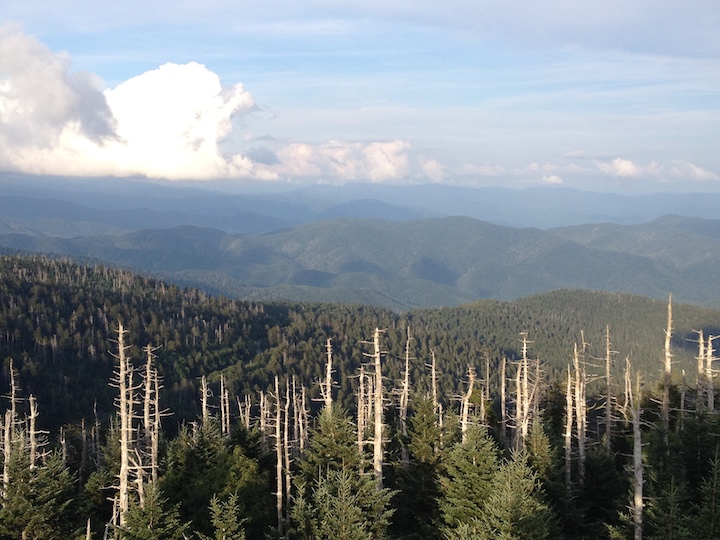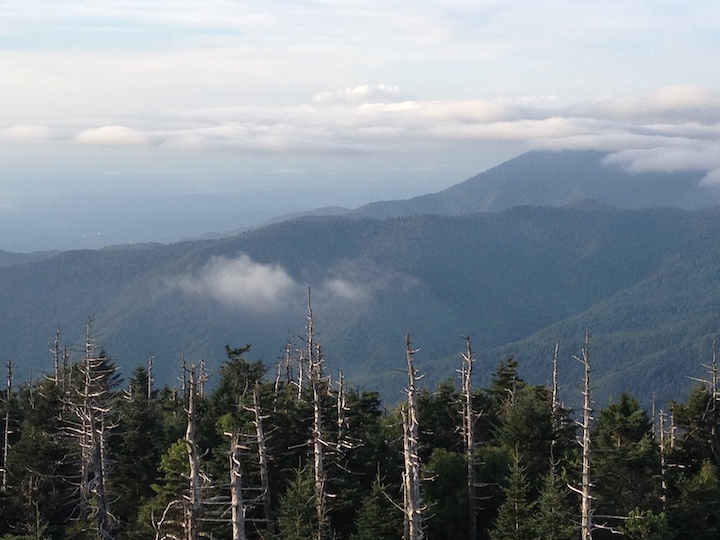From Clingmans Dome in the Great Smokies
I’m teaching a class this semester called “Writing Places and Spaces,” which focuses on ways in which nonfiction writers write about place. The course stems from work I did during my doctoral studies (check out my “Twenty-Five Books in Thirty Days” challenge as part of my prep). One of those books was Bill Bryson’s A Walk in the Woods: Rediscovering America on the Appalachian Trail, a charming book that I’m now teaching as part of this class.
As I was pulling together materials for this week’s class, I came across some photos I took in 2012 in Great Smoky Mountains National Park from the top of North Carolina’s Clingmans Dome, one of the highest points in the eastern U.S. and the highest point along the Appalachian Trail (6,643 feet). As Edward Alexander has written, Clingmans Dome has a Civil War connection. Aside from that, it’s just plain beautiful up there, so I thought I’d share a few of my pictures (with an additional Civil War connection, below).
An observation tower at the top of Clingmans Dome offers a 360-degree panorama, with views as far as 100 miles on a clear day.
The forest surrounding the summit consists mostly of red spruce and Fraser fir. “It is a forest under stress,” according to an NPS wayside sign. “The dead tress you see are Fraser fir, victims of a European insect.”
“Another threat, with far broader effects, comes from the air,” the sign continues. “The park receives the highest sulfur and nitrogen deposits—from acid precipitation—found in any national park. It is most severe at higher elevations. The average acidity of rain and snow here is 5-10 times greater than natural precipitations. This acid fallout damages park soils, streams, plants, and animals.”
Air pollution also impacts visibility. For instance, here’s a view eastward toward Cold Mountain (see, I told you there was another Civil War connection!):
Where is it, you ask? If visible, it would be just to the left of the double-humped mountain on the far ridgeline that you cans see at the center of the photo. It would be in the red circle:

Cold Mountain is 38 miles away and clearly visible on a clear day, but because of air pollution, visibility is often restricted to as little as 20 miles.
Still, Clingmans Dome was a beautiful spot to visit—worth the drive to get there and worth the steep half-hike to get to the top.






Stunningly beautiful view.
Thanks!